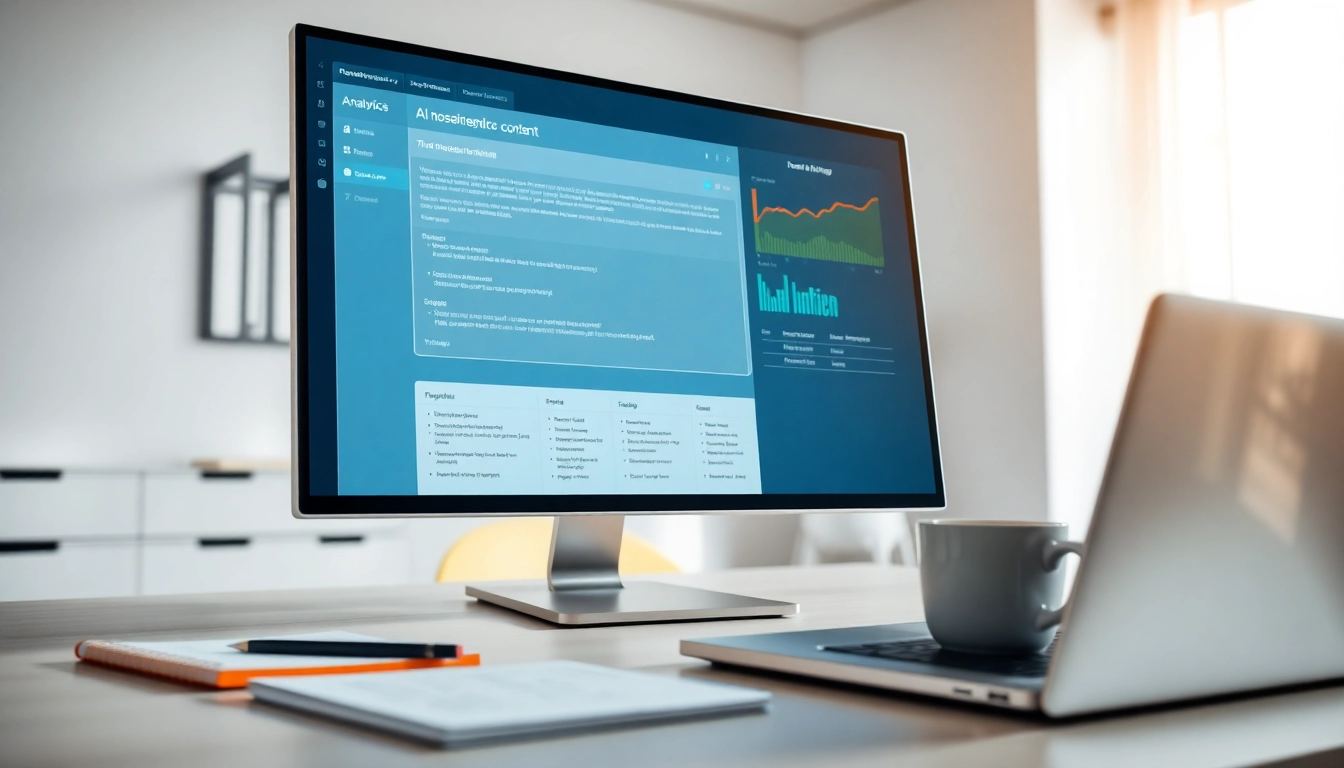Boost Your Content Quality with an Effective AI Checker

What is an AI Checker?
In our increasingly digital age, the ability to discern between human-generated and machine-generated content is paramount. An ai checker is a sophisticated tool designed to analyze and determine the authenticity of text, primarily identifying content that has been generated by artificial intelligence models, such as ChatGPT, GPT-4, and others. Understanding what AI checkers are and how they function is essential for content creators, educators, and businesses aiming to maintain a high standard of authenticity and quality in their written communications.
Understanding AI Detection Technology
AI detection technology revolves around the algorithms and methodologies implemented to distinguish between human and AI-written text. At its core, this technology exploits various linguistic markers and patterns that differentiate AI-generated content from human writing. For instance, AI models often produce text that is grammatically correct and coherent, yet may lack the uniqueness in voice and subtlety that characterizes human authorship. AI checkers use advanced machine learning techniques, natural language processing (NLP), and statistical models to analyze these patterns, determining the likelihood that a piece of content originated from an AI source.
How AI Checkers Work
The operational dynamics of AI checkers involve numerous steps:
- Input Text Analysis: The user provides the text they wish to check. This can often be done by pasting the content directly into a web interface.
- Algorithmic Processing: The AI checker uses a combination of machine learning and NLP algorithms to evaluate the text. It analyzes vocabulary usage, sentence structure, and even the contextual relevance of the content.
- Scoring and Reporting: Once the analysis is complete, the checker generates a report that includes a score indicating the probability of the text being AI-generated versus human-created.
Some advanced checker tools may also provide a detailed breakdown of potential AI markers within the text, allowing users to recognize specific patterns that align with known AI writing styles.
Common Use Cases for AI Checkers
The application of AI checkers spans various domains:
- Academic Integrity: Educators utilize AI checkers to uphold academic integrity by identifying work that may be generated by AI, thereby preventing plagiarism.
- Content Marketing: Marketers and content creators use AI detection tools to ensure the originality of their articles and blog posts, boosting SEO performance and brand credibility.
- Journalistic Standards: Journalists employ AI checkers to verify the authenticity of submitted articles and preserve the integrity of information dissemination.
Benefits of Using an AI Checker
Adopting an AI checker can yield a multitude of benefits, making it a valuable resource for individuals and organizations alike.
Enhancing Content Authenticity
As AI technology becomes more integrated into content creation, the importance of maintaining authenticity in our writing has never been higher. AI checkers provide a safeguard, helping users ensure that the content they are producing or receiving is genuinely human-crafted, preserving its originality and trustworthiness. This is especially critical in environments where credibility is essential, such as academia and journalism.
Improving Writing Accuracy
AI checkers not only help identify potential plagiarism or AI-generated content but can also enhance the overall quality of writing. By analyzing the text, these tools often deliver insights related to grammar, style, and readability. Consequently, users can revise and enhance their writing to better align with human writing standards, leading to improved clarity and engagement.
Saving Time and Effort
AI checkers streamline the proofreading and editing process, effectively reducing the amount of time spent on revisions. Rather than manually combing through text for inconsistencies or AI fingerprints, users can rely on sophisticated algorithms to perform this work swiftly and efficiently, allowing them to focus on more creative aspects of content production.
Choosing the Right AI Checker
With numerous AI checkers available in the market, selecting the appropriate one can be daunting. Here are critical factors to consider:
Key Features to Consider
When evaluating potential AI checkers, look for the following features:
- Accuracy: The primary function of any AI checker is its ability to accurately identify AI-generated content.
- User-Friendliness: A clear, intuitive interface encourages higher adoption rates among users.
- Additional Tools: Many AI checkers offer supplementary tools like grammar checkers or plagiarism detection, enhancing their utility.
Comparative Analysis of Popular AI Checkers
To provide a clearer perspective, let’s look at some well-known AI checkers:
| AI Checker | Accuracy Rating | Key Features | Free Version Availability |
|---|---|---|---|
| ZeroGPT | High | Plagiarism Checker, Grammar Tool | Yes |
| QuillBot | 4.9/5 | Content Rewriter, Grammar Checker | Yes |
| Grammarly | Reliable | Comprehensive Proofreading | Yes |
User Reviews and Expert Ratings
Consulting user reviews and expert ratings can also inform your choice. Platforms such as Capterra and G2 provide insights into user satisfaction and tool performance, giving potential users a real-world perspective on the strengths and weaknesses of various AI checkers.
Integrating AI Checkers into Your Workflow
Implementing an AI checker into your writing process can boost your content’s quality. Here are steps to achieve optimal integration:
Setting Up the Tool for Optimal Use
The initial setup of your chosen AI checker should be straightforward. Often, these tools come with user guides or integrated tutorials that can ease the onboarding process. Custom configurations, such as adjusting sensitivity levels or preferred style guides, can enhance the effectiveness of the checker in catering to specific needs.
Best Practices for Content Submission
To maximize the benefits of using an AI checker:
- Collaborate: Encourage team input when drafting content to ensure diverse human voices are reflected.
- Iterate: Use the AI checker in multiple drafts, refining content progressively while benefiting from ongoing feedback.
- Embrace Feedback: Utilize the insights provided by the checker for improving overall writing quality, going beyond mere AI detection.
Leveraging Results for Content Improvement
After running checks, it’s crucial to analyze the results. Examine the flagged areas, consider suggestions for improvement, and incorporate changes. This feedback loop enhances the writing quality over time, increasing the likelihood of producing content that resonates with your audience.
Future Trends in AI Detection
As AI technology continues to evolve, so too does the landscape of AI detection. Here are some trends to watch:
Advancements in AI Technology
The ongoing evolution of AI algorithms is anticipated to introduce more sophisticated detection methods. As new AI writing models emerge, AI checkers will need to adapt, enhancing their algorithms to accurately identify content produced by these evolving AI systems.
Ethical Considerations in AI Checking
As the capabilities of AI expand, so do the ethical implications. Issues surrounding transparency, authenticity, and the potential misuse of AI-generated content must be addressed. Educators, businesses, and regulators will need to collaborate in creating ethical frameworks that govern AI usage and detection practices.
Predictions for the Industry
Looking ahead, the AI checker industry is likely to witness significant growth. As businesses and educational institutions adopt AI-assisted content creation, the need for reliable detection tools will only increase. This could lead to greater competition among providers, potentially resulting in improved functionalities and broader access to quality AI checking tools.








